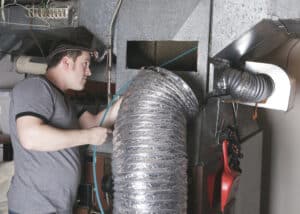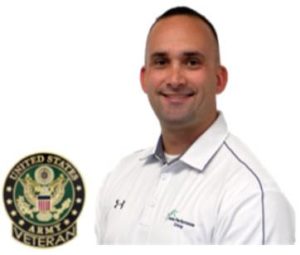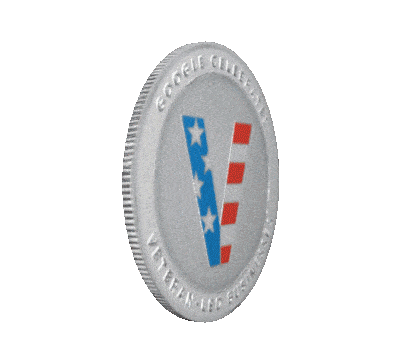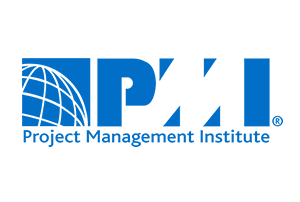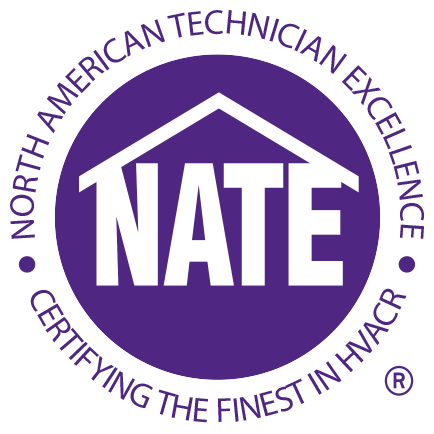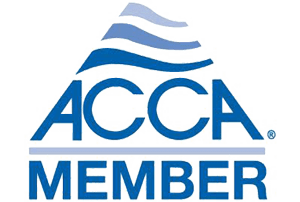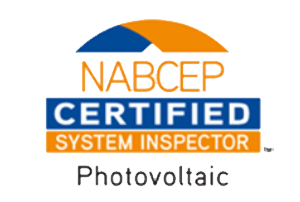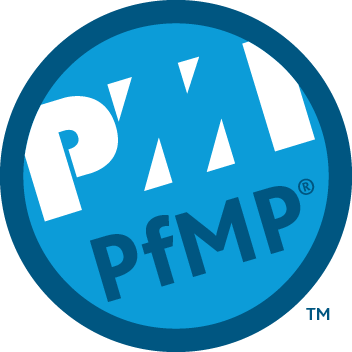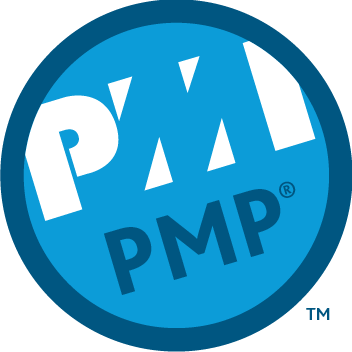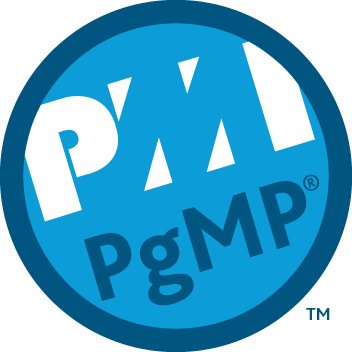Improve Home Health with Ductwork Cleaning and Sanitizing?
Ductwork cleaning and sanitizing can help improve your home health. The COVID-19 Pandemic placed renewed interest on indoor air quality, occupant safety, and the health of our buildings. In 2020, the American Society of Heating, Refrigerating and Air-Conditioning Engineers (ASHRAE), published a technical journal concluding the SARS-CoV-2 virus travels through the air, both in droplet and aerosol form. Later, the United States Centers for Disease Control (CDC) confirmed transmission of COVID through respiratory fluids both droplet and particulate aerosols.
Pathogens exhaled in droplet form, generally fall out of the air within 3 feet, which is the basis for social distancing. However, virus in aerosol form, behaves more like a gas and can travel much greater distances, remaining suspended in air for longer periods, and therefore coming in contact with more surfaces. The difference between droplet and aerosol diffusion applies not just to SAR-COV-2, but any disease causing pathogen capable of surviving in the air, such as influenza (Flu), adenovirus, rhinovirus, measles, mumps, and chickenpox.
Work by the National Institutes of Health (NIH) found clear evidence ducts and ductwork systems can become contaminated with microbial growth, including molds, and bacteria. The United States Environmental Protection Agency (EPA) and industrial hygienists agree that ductwork cleaning in conjunction with comprehensive HVAC system maintenance is an appropriate approach. The guidance went on to suggest the most effective approach incorporates comprehensive system cleaning and air distribution sanitization. This approach is accomplished with mechanical scrubbing and suction of the entire ductwork system, followed by cleaning of HVAC system components such as cooling coils, fans, and heat exchangers, culminating with air filter replacement with a high MERV rating, at least 13 or better.
When to Consider Professional Ductwork Cleaning for Your Home
As compared to only a few decades ago, today we spend the majority of our time indoors. A study sponsored by the United States Environmental Protection Agency (EPA), and published in the Journal of Exposure Science & Environmental Epidemiology finds, we spend nearly 90% of our time indoors. Therefore, Indoor Air Quality (IAQ) 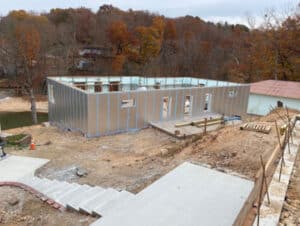
- An occupant diagnosed with a condition that is highly transmittable through air droplets or in aerosol form. Viral examples may include influenza “flu”, measles, mumps, varicella “chickenpox”, and viral meningitis.
- Microbial growth observed in ductwork or supply registers and return grilles. This may include mold, mildew, fungi, bacteria. The growth may appear white, black or even green depending on the extent of contamination.
- Offensive odors originating from the ductwork. Mold growth inside the ductwork may have a musty, earthy smell sometimes resembling the odor of rotten wood or wet socks. This symptom can lead to more hazardous health problems.
- Debris build-up in the ductwork that restricts airflow produced through HVAC equipment fans.
- Dust or other debris originating from duct grilles or registers when the indoor fan is turned on.
- Noticeable change to allergic reactions and other symptoms of people living in the home
Duct Cleaning Services – What to Avoid
The following methods of ductwork cleaning do not thoroughly clean duct systems and in many cases may exacerbate pre-existing problems. Some methods can increase the quantity and concentration of contaminants in the indoor air.
- Wet dry vacuum – these types of units lack the capability to reach the entire length of branch and trunk ducts. Additionally, shop vacuums do not possess adequate filtration, and in many cases simply exhausts the smallest and most harmful particles back into the homes breathable air.
- Negative pressure systems – these types of systems work by creating suction inside the ductwork in order to remove debris, but come with many disadvantages. First, if the ductwork was never proper sealed, preferably with a duct mastic, it is unlikely a negative pressure system will be able to create strong enough suction to remove even large debris, leaving the smallest and potentially most harmful particles inside the duct. Additionally, contaminates that are stuck to the inside of the ductwork will not be removed without mechanical agitation by a brush of similar mechanism, which most negative pressure systems do not possess. Finally, depending on the manufacturer, suction only units do not possess proper air filtration resulting in particulates being recirculated back into the home.
- Mechanical surface cleaning without High Efficiency Particulate Air (HEPA) filtration – This type of system addresses some of the shortfalls of negative pressure systems, namely, these units are capable of breaking loose nearly all material inside the ductwork and pull the pollutants out by mechanical agitation. However, if the equipment is not equipped with a HEPA filter, the small and most hazardous particles will simply be exhausted back into the homes air negating much of the use of ductwork cleaning.
Duct Cleaning Equipment and Proper Method
The safest and most effective ductwork cleaning method is to use a mechanical agitator, such as a motorized brush coupled with negative pressure suction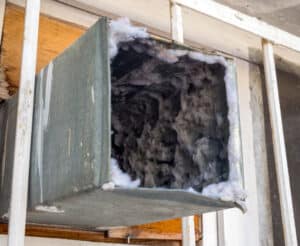
Ductwork Cleaning and Sanitizing – Best Practices
Both the U.S. National Institutes of Health and National Air Duct Cleaners Association (NADCA) recommend that all portions of an HVAC system be cleaned. Best practice is to clean ducts, followed by the HVAC unit and component cleaning, concluding with installation of a high Minimum Efficiency Reporting Value (MERV) air filter. Industrial hygienists recommend a minimum MERV 13 filtration system and filter.
As detailed above, a professionally trained service provider will use specialized equipment and tools to dislodge dirt, debris and microbial growth in ductwork and remove the material with a high-powered HEPA vacuum system. Additionally, the HVAC equipment, specifically evaporative coils, indoor blower motor fan blades, and heat exchangers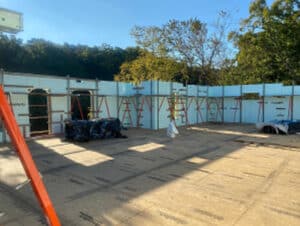
Home Performance Group Duct Cleaning Services in Kansas City
At Home Performance Group, we continue to invest in state-of-the-art equipment and technical training ensuring clients receive a first-class service experience and most importantly a healthy and safe end product. We have cleaned and sanitized numerous commercial and residential ductwork systems.
If you are interested in a no-cost in-home ductwork cleaning and sanitizing consultation, schedule with a Solutions Advisor today.

Article by Larry L. Motley Jr., 1 November 2022
Larry is a graduate of both Wentworth Military Academy and Missouri Western State University earning a double bachelor’s degree in Economics and Finance. Additionally, he maintains six professional tradesman licenses in two states and advanced credentialing in green technology, project and program management, and process improvement. Larry is a three-time combat veteran having served in Operation Iraqi Freedom, Operation New Dawn, and Operation Inherent Resolve. He continues to serve through a value-based building science company focused on providing clients the best design, highest quality installation, and most honest repair services in the community.


Featured Service Areas:
| Missouri | Kansas | ||||
|---|---|---|---|---|---|
|
Belton Blue Springs Cameron Excelsior Springs Gladstone Holt |
Independence Kansas City Kearney Lathrop Lawson Lee's Summit |
Liberty North Kansas City Parkville Platte City Plattsburg Polo |
Raytown Riverside Smithville Sugar Creek Weston |
Kansas City Lansing Leavenworth Leawood Lenexa |
Merriam Mission Mission Hills Praire Village Shawnee |


